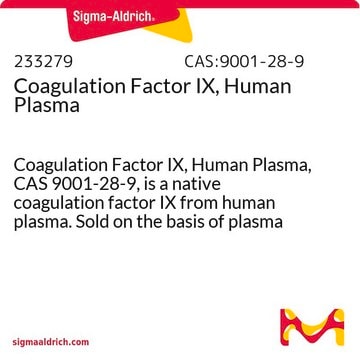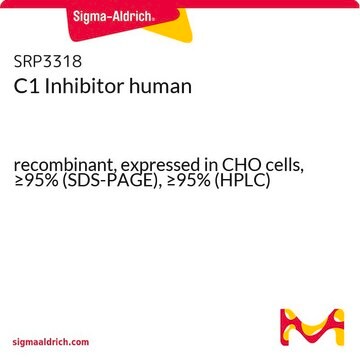EMS0011
Low-Artifact Digestion Buffer
Minimizes artifactual deamidation and oxidation during trypsin digestion prior to peptide mapping
Synonym(s):
Hi-Fidelity Peptide Mapping Buffer
About This Item
Recommended Products
form
liquid
suitability
suitable for (peptide mapping)
shipped in
wet ice
storage temp.
2-8°C
Related Categories
General description
Endogenous deamidation and oxidation of protein amino acids can be implicated in and be indicative of many diseases, protein turnover, development, and aging. The introduction of these modifications can often affect biological activity, half-life, and immunogenicity.
Current protein digestion workflows often introduce a significant amount of artifactual deamidation and oxidation which prohibits the measurement of the endogenous levels.
The Low Artifact Digestion Buffer allows protein digestion in less than 6 hours with minimized artifactual modifications such as deamidation and oxidation. The amount of oxidation and deamidation introduced during further downstream processing of biotherapeutic antibodies and proteins can be accurately determined. The most commonly deamidated amino acid is Asn especially when followed by small amino acids such as Gly. The most commonly oxidized amino acids are Met, Cys, and to some extent Trp and His.
Storage Class Code
12 - Non Combustible Liquids
WGK
nwg
Flash Point(F)
Not applicable
Flash Point(C)
Not applicable
Certificates of Analysis (COA)
Search for Certificates of Analysis (COA) by entering the products Lot/Batch Number. Lot and Batch Numbers can be found on a product’s label following the words ‘Lot’ or ‘Batch’.
Already Own This Product?
Find documentation for the products that you have recently purchased in the Document Library.
Articles
An optimized peptide mapping protocol using NISTmAb as a model monoclonal antibody, shorter incubation times, and improved digestion buffer to demonstrate minimal artificial asparagine deamidation and methionine oxidation.
This application note compares three different column chemistries from the BIOshell™ line of columns with superficially porous particles to evaluate their performance in peptide mapping.
Workflows for monoclonal antibody adalimumab characterization ensure drug safety and efficacy through critical quality attribute analysis.
Method development for protein fingerprinting of AAV serotype 5 using both intact mass analysis and peptide mapping, to determine critical quality attributes for gene therapy, utilizing three different columns.
Protocols
An optimized LC-MS/MS based workflow for low artifact tryptic digestion and peptide mapping of monoclonal antibody, adalimumab (Humira) using filter assisted sample preparation (FASP).
A step-by-step protocol for released N-linked glycan analysis of the monoclonal antibody adalimumab, based on UHPLC-FLR-MS and procainamide labeling.
Our team of scientists has experience in all areas of research including Life Science, Material Science, Chemical Synthesis, Chromatography, Analytical and many others.
Contact Technical Service






